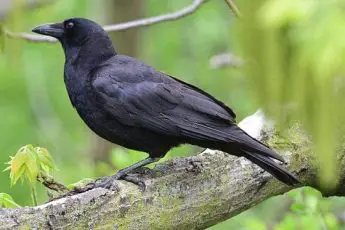Introduction
Quick Navigation
Animals are known to frequently inhabit a certain geographical region or area of land. This can occur as a result of the suitable state of the environment. Over time, these animals gradually become natives or residents of such areas. Birds also easily become natives of several regions, especially those with a large volume of natural resource areas. These regions, in turn, become hot spots for birding and other bird-related activities. Birding essentially involves observing and studying bird species in a bid to gather relevant information about them, such as feeding patterns, social behavior, and breeding modes. In today’s world, it has become a well-known hobby that provides satisfaction and pleasure to most people.
See also; cardinal bird symbolism and spiritual meaning
Native birds are usually very abundant in their regions of the nativity as the birds the environmental conditions allow them to thrive. Therefore, when you spot a bird as much as possible in a certain area, there is a high chance that such a bird is native to the area. These flying creatures can be residents or plain frequent visitors. This is because several birds are migratory, which means that they change geographic locations alongside the change of seasons. Migration is a major part of such birds’ natural cycle of existence. Several birds are native to the American state of Minnesota, which is an excellent source of tourism for the state.
Check also; cleaning of hummingbird feathers
Ecological description of Minnesota
Located strategically in the north-central region of the United States and also referred to as the land of ten thousand lakes, this state boasts of about five million people and a highly diversified economy. It is the twelfth largest state by land area, and most of these lands are used for industrial agriculture, which is a key driving force of the state’s economy. Other sectors like banking, tourism, and financial services also contribute to its economic strength.
See this also; can birds eat raisins
Ecologically, the state of Minnesota is a beautiful haven as it is abundant in natural grasslands, lakes, and forest reserves, thus making it a convenient ecosystem for various living organisms and their different species. Several different animal species thrive and multiply numerically in their respective natural habitats. The population of animals in this region is relatively high as the physical and biological components of the environment are highly supportive. It is also relevant to state that the number of birds indigenous to this state is amazingly huge, making it an attraction to birders.
Birds native to Minnesota
Birders would love visiting Minnesota as it is home to several rare, iconic and astonishing bird species. If you are in search of new and exotic birds, this state is a perfect place to find them. There are about four hundred and forty-six different species of birds in this state. Most of them are annual residents, while the migratory species are frequent and regular visitors. Some of the bird species include the following: American coot, American crow, common loon, bald eagle, Canada goose, great gray owl, Boreal owl, red-tailed hawk, Mallard, and Eastern bluebird. These are just a few of the numerous members of the aviary world present in Minnesota.
Check this also; can birds eat almonds
American coot
This duck-like-looking creature is undeniably a member of a group of waterbirds known as rails. They are excellent swimmers found in marshes, and a population of about fifty thousand of them calls this region home. These birds are not such good flyers as they require a lot of time to take off, but this does not stop them from migrating. A healthy diet of soft plants and a variety of insects will keep them well-fed and healthy. Identifying them through the sounds they make and their social behavior can be a wonderful experience for birders.
American crow
Most bird enthusiasts generally love this bird species as they closely resemble ravens in physical appearance and often enjoy perching. This makes it easier for them to be spotted and observed in their natural habitat. These social birds usually gather in flocks and groups during breeding and feeding. The American crow is omnivorous, making it easy for them to blend in developed cities and urban centers as they can eat practically anything. In Minnesota, it is a regular sight to spot them all year round as they only migrate on short distances and for a limited amount of time.
See this too: Birds of Wisconsin
Common loon
The state bird of Minnesota is a water bird with a thick neck and a long bill, often black in color, and prefers staying on the water to moving on land. The population of these birds is very high, and only Alaska has a higher number of them. They feed mainly on fishes such as perch, bullheads, minnows, and trout. Reptiles and amphibians like salamander, frogs, and toads can also feature in their diet. They have four different calls and can probably live for thirty years and even more. A visit to Minnesota would surely provide an opportunity to see these birds.
Bald eagle
Rare birds are a pure source of delight when spotted, and as the bald eagle becomes scarce and rare, a visit to the state of Minnesota would be worth it as it is one region where they still live. It is also worthy to note Minnesota has the third-highest population of bald eagles in America.
Check this; birds of Ohio
Canada goose
This bird is found almost everywhere in Minnesota and is a migratory bird that can go as far as four thousand miles during migration. The Canada goose feeds on water plants, insects, and grasses, and it mates for life and also raises young ones.
Conclusion
Birdwatching becomes very exciting and interesting in places with a lot of native birds as residents as there would be several species to watch and observe. The state of Minnesota offers a wide variety of bird species, and most of them are in huge numbers. For birders considering regions to see birds, Minnesota proves to be a perfect location for such.

